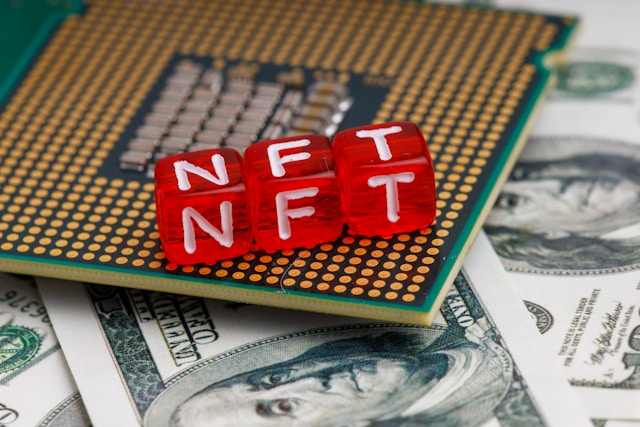
- September 25, 2023
- Personal Finance Advisor
- 0
Liquid gold investment, usually refers to investing in gold assets that can be bought or sold easily, similar to cash. This includes gold bullion, gold coins, gold ETFs, gold futures contracts, and shares in gold mining companies. The term “”liquid”” represents the ease and speed at which these gold assets can be converted into cash, without significantly affecting their market price.
Understanding Liquid Gold Investment
Liquid gold investment is often seen as a safe haven during times of economic instability or inflation, as gold typically retains its value. Unlike stocks and bonds, gold is not linked to a specific company or government, making it less vulnerable to factors like corporate performance or political instability. This type of investment also offers diversification benefits, as it often has a negative correlation with other asset classes.
However, liquid gold investment is not without its challenges. The price of gold is subject to volatility, influenced by factors such as global economic conditions, supply and demand, and currency fluctuations. Investors, thus, need to have a good understanding of these factors and a clear investment strategy to gain maximum benefits from their liquid gold investments.
The Basics of Investing in Gold
Investing in gold is an age-old practice with a rich history dating back to early civilizations, where it was highly treasured due to its scarcity and aesthetic appeal. Gold maintains its value over time, making it an attractive choice for investors.
To begin with, it’s essential to understand that gold investment can take several forms. Physical gold is the most traditional form of investment where one purchases gold in the form of coins, bars, or bullion. This tangible asset can be stored and later sold or used as collateral.
On the other hand, gold exchange-traded funds (ETFs) offer a more modern way to invest in this precious metal. ETFs are traded on stock exchanges and offer the benefit of investing in gold without the need to store it physically.
There are also gold futures and options, which are contracts that give investors the right to buy or sell gold at a specific price in the future. These are more complex financial instruments that require a solid understanding of market dynamics.
Each form of gold investment has its advantages and potential drawbacks. Therefore, understanding these basics is crucial to making an informed investment decision.

Pros and Cons of Gold Investment
Investing in gold offers a plethora of benefits, making it an attractive asset for many investors worldwide. One significant advantage is that gold often performs well during periods of economic turmoil. It is considered a ‘safe haven’ asset, often seeing its value increase when stock markets are in decline. This makes it an excellent hedge against inflation, as it retains its value even when fiat currencies lose theirs. Additionally, gold is a finite resource, meaning its value could increase as supply diminishes over time.
However, investing in gold is not without its downsides. Unlike stocks and bonds, gold does not pay dividends or interest, meaning the only return you will see is from the appreciation of its value. This makes it a less attractive option for income-focused investors. Gold’s value can also be volatile, with prices fluctuating due to various factors including geopolitical events, changes in supply and demand, and market speculation. Lastly, physical gold storage can pose challenges, including insurance and secure storage costs.
In conclusion, while gold can provide a valuable hedge against economic instability, potential investors should also consider the potential downsides before making an investment decision.
How to Start Your Gold Investment Journey
Starting your gold investment journey can seem daunting, but with the right knowledge and tools, it can be a rewarding experience. The first step is to educate yourself. Understanding the gold market, its historical performance, and its influence factors is crucial. You should also familiarize yourself with various gold investment options, such as gold bullion, gold coins, gold ETFs, gold mining stocks, and gold mutual funds. Each has its benefits and risks, and your choice should align with your financial goals and risk tolerance.
Next, decide how much of your portfolio you want to allocate to gold. Financial advisors often recommend investing 5-10% in gold as a hedge against market volatility. However, the percentage can vary based on individual circumstances and market conditions.
Once you have a strategy, you need to choose a platform for your investment. Many online brokers offer gold ETFs and mutual funds, while banks and precious metals dealers typically sell physical gold.
Lastly, regular monitoring and rebalancing of your portfolio are essential. Gold prices can fluctuate due to various factors, such as geopolitical tensions, inflation, and currency movements. Staying informed and adjusting your investment accordingly can help you achieve your financial objectives.
Remember, investing in gold should be seen as a long-term strategy rather than a quick way to make money. Patience and diligence are key in this journey.
The Role of Gold in a Diversified Portfolio
Gold has long been considered a safe haven asset, offering a sense of security and stability during volatile market periods. As part of a diversified investment portfolio, it can act as a hedge against inflation and currency fluctuations. Unlike other assets, gold often maintains or even increases its value over time, regardless of global economic conditions. This makes it an ideal counterbalance to more volatile investments like stocks and shares.
Including gold in a portfolio can enhance risk-adjusted returns. It performs particularly well during periods of systemic crisis, thereby reducing portfolio losses. Furthermore, gold is a globally recognized asset that can be easily bought, sold, or traded, making it a highly liquid investment.
However, like any investment, gold should not dominate a portfolio. Financial advisors often recommend that gold constitute between 5% and 15% of a total portfolio. This allows for the benefits of gold’s stability and potential returns, without excessive exposure to the risk associated with any single asset class.
In conclusion, the role of gold in a diversified portfolio is to provide balance, stability, and a hedge against inflation, while enhancing overall returns. It’s an investment strategy that has stood the test of time.
Key Institutions and Platforms for Gold Investment
In the realm of gold investment, numerous institutions and platforms offer various opportunities for investors. Traditional banks and financial institutions often provide gold investment products, such as gold bars, coins, or gold-linked investment accounts. These can be physically owned or held in a secured vault by the institution.
On the other hand, digital platforms have revolutionized the way investors engage with the gold market. Online brokers facilitate the buying and selling of gold ETFs (Exchange Traded Funds) and ETCs (Exchange Traded Commodities), which track the price of gold and can be traded like individual stocks. These digital platforms provide flexibility, allowing investors to invest in gold without the need for storage or insurance.
Gold mining stocks are another avenue available on many stock trading platforms. By investing in these, one is essentially investing in the performance of gold mining companies, which can be influenced by various factors, including the price of gold.
When choosing a platform or institution for gold investment, it is critical to consider their reputation, security measures, transaction fees, and the transparency of their pricing mechanism. Research and due diligence are key in this aspect of gold investment.
Market Trends and Predictions for Gold in 2023
The trends and predictions in the gold market for 2023 are pivotal to make informed decisions for investors interested in liquid gold investment. The global economic scenario, geopolitical tensions, and inflationary trends are among the key factors influencing the gold market.
In 2023, experts predict a bullish trend for gold, backed by the rising inflation and the uncertain economic landscape due to the ongoing global pandemic. Gold, traditionally seen as a safe haven during times of economic unrest, is expected to witness increased demand.
Moreover, the shift towards digitization in the gold investment landscape, including digital gold currencies, gold ETFs, and online trading platforms, is anticipated to fuel the growth of gold investments.
However, the predictions aren’t without risks. The potential for tighter monetary policies and interest rate hikes by central banks globally could pose challenges. Such moves generally strengthen the national currency, making gold a less attractive investment option.
To conclude, while the market trends and predictions hint at a positive outlook for gold in 2023, investors should remain vigilant of the global economic indicators and policy changes. Diversification of the investment portfolio with a balanced mix of assets is always a recommended strategy to mitigate potential risks.
Mitigating Risks in Gold Investment
-
- Investing in gold, like any other investment, carries certain risks. However, these risks can be effectively mitigated with proper foresight and strategic planning. Firstly, it’s crucial to understand that gold prices are subject to fluctuation due to economic and political factors. Therefore, keeping abreast of global economic trends and geopolitical events can provide valuable insights into the possible direction of gold prices.
-
- Secondly, investors should not put all their eggs in one basket. Diversification is a key risk mitigation strategy in any form of investment, including gold. While gold can serve as a hedge against inflation and economic downturns, it should not constitute the entirety of one’s investment portfolio. The proportion of gold in an investment portfolio would depend on individual risk appetite and investment goals.
-
- Additionally, one should beware of scams and fraudulent schemes that are unfortunately quite common in the gold investment market. It’s important to only deal with reputable and licensed institutions when buying or selling gold. Regular audits and safe storage are other precautions to protect your gold assets.
-
- Finally, it’s advisable to seek professional financial advice before venturing into gold investment. A financial advisor can provide personalized guidance based on your financial situation and investment objectives, helping you navigate the complexities and risks of the gold market.
Case Studies: Successful Gold Investments
Investing in gold has proven successful for many investors over the years. Let’s take a look at a few examples.
One classic case is that of the investor who purchased gold in 2001 when its price was just over $250 per ounce. By 2011, the price had surged to an all-time high of over $1900 per ounce. The investor who held onto their investment during this period would have seen an impressive return.
Another example can be seen in the aftermath of the 2008 financial crisis. Many investors turned to gold as a safe haven asset, driving its price up. Those who invested in gold during this period saw significant returns as the price of gold peaked in 2011.
Then there are gold mining companies that have provided lucrative returns to their shareholders. For instance, Barrick Gold, one of the world’s largest gold mining companies, has consistently provided strong returns to its investors.
These case studies highlight that timing, market understanding, and patience are key to successful gold investments. While past performance is not indicative of future results, these examples provide valuable lessons for potential gold investors.
Future Prospects of Gold Investment
Gold investment has long been considered a safe haven for investors, particularly during times of economic uncertainty. As we look ahead, the future prospects of gold investment continue to be promising. Several factors are expected to drive this trend.
-
- Firstly, the ongoing geopolitical tensions and economic uncertainties globally contribute to the attractiveness of gold as a risk-diversifying asset. Gold often performs well when other investment classes, such as stocks and bonds, are underperforming, providing a financial safety net for investors.
-
- Secondly, the increasing interest of institutional investors in gold, as evidenced by the robust inflows into gold-backed ETFs, indicates a bullish outlook for gold investment. These institutions often have a long-term investment horizon, further solidifying gold’s future prospects.
-
- Thirdly, the growing demand for gold in emerging markets, especially India and China, is expected to support gold prices in the future. In these countries, gold is not only an investment but also an essential part of cultural traditions.
-
- Lastly, the advancements in fintech have made gold investment more accessible to retail investors, fostering a more inclusive gold market.
In conclusion, while gold investment comes with its challenges and risks, its future prospects appear to be more golden than ever. As always, investors are advised to do their due diligence and diversify their portfolios.




































